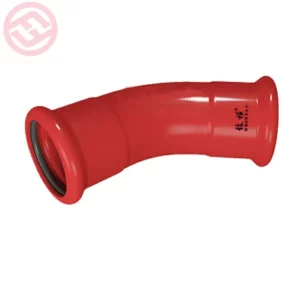The costs of press fitting systems compared to other types of fittings depend on various factors, including the type of fittings, the materials used, the brand or manufacturer, and the specific requirements of the application.
Here are some considerations regarding the costs of press fitting systems compared to other types of fittings:
Press Fitting System Costs:
- Material Costs:
- The material costs of press fittings can vary based on the material used (e.g., copper, stainless steel, carbon steel) and the brand. Press fittings are available in different materials to suit various applications.
- Tool Costs:
- Press fitting systems require a specific press tool for installation. The cost of the press tool can be a significant factor in the overall investment. However, the efficiency and time savings during installation can contribute to cost-effectiveness.
- Labor Costs:
- Press fitting systems are known for their ease of installation, and the process typically requires less labor compared to traditional methods such as welding or threading. Reduced labor time can contribute to cost savings.
- System Components:
- The costs may also include additional components such as seals, press fitting systems O-rings, and adapters. These components contribute to the integrity of the press connection.
Comparison with Other Fitting Types:
- Welded Fittings:
- Welded fittings, such as welded steel or welded stainless steel fittings, may involve higher labor costs due to the welding process. Additionally, welding requires skilled labor, and the equipment costs for welding may be higher than press tools.
- Threaded Fittings:
- Threaded fittings are generally cost-effective in terms of material costs, but the labor costs associated with threading and assembling threaded connections can be higher than press fitting systems.
- Soldered or Brazed Fittings:
- Soldered or brazed fittings, commonly used with copper pipes, may have lower material costs but can require skilled labor for proper joint preparation and soldering. The time and labor involved in soldering can impact overall costs.
- Grooved Fittings:
- Grooved fittings, which use a grooving method for connection, may have costs associated with the grooving equipment. While grooved fittings are efficient, the equipment costs may be higher than press tools.
Considerations:
- Application Requirements: Consider the specific requirements of the application, including pressure, temperature, and compatibility with the intended fluid or gas.
- Labor Efficiency: Press fitting systems are known for their labor efficiency, potentially reducing overall installation costs. The ease and speed of installation can be advantageous in large projects.
- Brand and Quality: Different brands and manufacturers offer press fitting systems, and the costs may vary based on the brand and the quality of the components. It’s important to choose reputable brands with a track record of reliability.
- System Complexity: The complexity of the plumbing or piping system can impact costs. Press fitting systems may offer advantages in terms of simplicity and efficiency for certain applications.
In summary, the overall costs of press fitting systems compared to other types of fittings are influenced by multiple factors. While press fitting systems may have initial equipment costs, their efficiency in labor and installation can contribute to cost savings over the life of the system. The specific requirements of the application and the desired features should guide the selection of the most cost-effective fitting solution.
